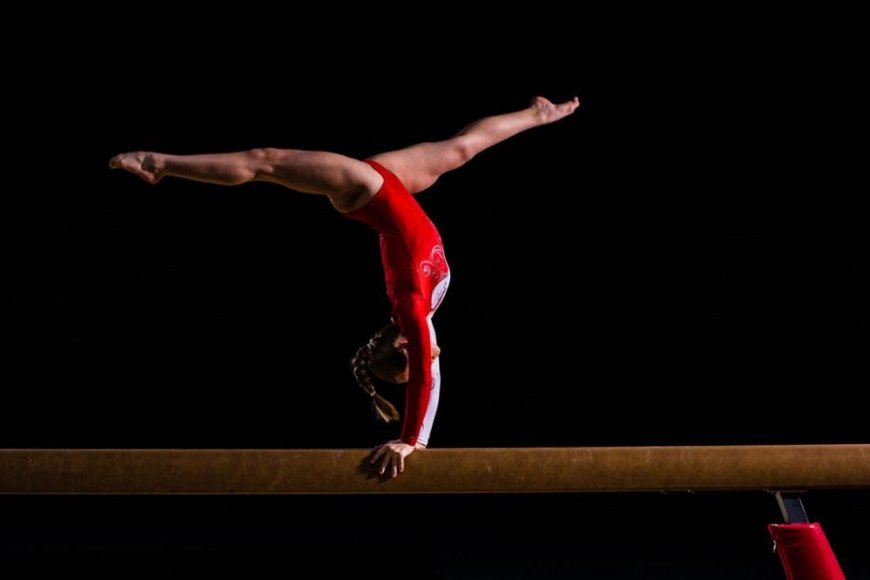Is gymnastics always a strong stretch and pain?
playful and completely painless exercises that help to quickly develop a child's flexibility. gymnastics always a strong stretch and pain.

Flexibility and plasticity - as a rule, qualities are innate, but they can be developed if you give your child to play sports or rhythmic gymnastics from an early age. Many parents have a misconception about such sports: it is a huge load, and the training itself is accompanied by severe pain. But developmental gymnastics is a completely different activity: easy, playful and completely painless exercises that help to quickly develop a child's flexibility. gymnastics always a strong stretch and pain.
Flexibility exercises for the little ones
The children's gymnastics program, which can be found here, is selected by age groups. You can give a child to classes from 1.5-2 years. At this age, bones and joints are very flexible, so the result of training appears much faster. Parents should not be afraid that their children will be in pain during classes, because all movements are light, performed in a playful way and the kids really like it. At such a young age, the following exercises help to develop flexibility and elasticity:
- Rolling on special soft modules: lying on his back, arms stretched back;
- Hanging on the crossbars: performed with the support of a coach or parents;
- Deflection of the back from a supine position.
These simple exercises help to develop and strengthen the spine and the muscular corset of the arms and legs, as well as make the muscles more elastic.
As often as the child will be engaged, exercises become more difficult:
- Leans forward from different body positions: lying, standing and sitting;
- Stretching the legs while sitting on the floor;
- Rolling on the back;
Must Read: We teach a child to handle money
Exercises are basic, are performed with pleasure by children and absolutely do not bring discomfort. The peculiarity of developmental gymnastics is that everything is done gradually, the body gradually gets used to the load.
When the child is 4 years old, twine exercises are added to the standard program. Depending on the physical training, the coach selects the degree of load so that the child does not feel discomfort and pain.
A set of exercises for children aged 5 to 7 years
From this age the complex of exercises expands, the exercises directed directly on a stretching are added. If a child attended developmental gymnastics at the age of 2-3 years, then by the age of 5 he will be confident to sit on the twine, at least 30 seconds.
Up to 7 years the child will perform the following exercises:
- Stretching of closed and spaced legs;
- Independent, without the support of the coach twine;
- Coups on the floor back and forth;
- Kick your feet.
By the age of 7, children easily master the first acrobatic elements. They can do a wheel, various overturns, exercises on gymnastic shells.
Features of developmental gymnastics classes
To achieve the desired result, to develop in the child flexibility and elasticity, it is necessary to be engaged regularly and long. These are the basic requirements. Therefore, children do not feel physical discomfort and pain during classes, as everything happens gradually. Flexibility develops in children very quickly, but just as quickly and is lost if the achieved result is not maintained by regular training.
In addition to the development of elasticity, there is another advantage of developing gymnastics - they have a positive effect on the whole body. Children who regularly attend the section, not only impress their peers with the ability to perform various acrobatic elements, but also have excellent, strong health.
Developmental gymnastics has a positive effect on the work of all internal organs and life support systems. During training, the body is saturated with oxygen, blood circulation is accelerated, due to which all cells and soft tissues receive the required amount of nutrients.
Flexibility exercises strengthen the musculoskeletal system and spine. Children who attend training do not have problems with the spine (curvature) or stooping, which are often observed at school age.
Developmental gymnastics is not a grueling exercise that is accompanied by muscle pain. Training takes place in a playful way, giving children real pleasure. Gradual increase of loading - the basic rule of employment. The children themselves do not notice how yesterday they moved on fit ball, did elementary overturns and hung on the crossbar, and today they can easily sit on the twine and linger in it for more than a minute.
Particular attention during training is paid to warm-up, which allows you to warm up the muscles, preparing them for loads and stretching. Developmental gymnastics is a great way to develop a child's flexibility and elasticity, maintain good health and form a fully developed personality.
